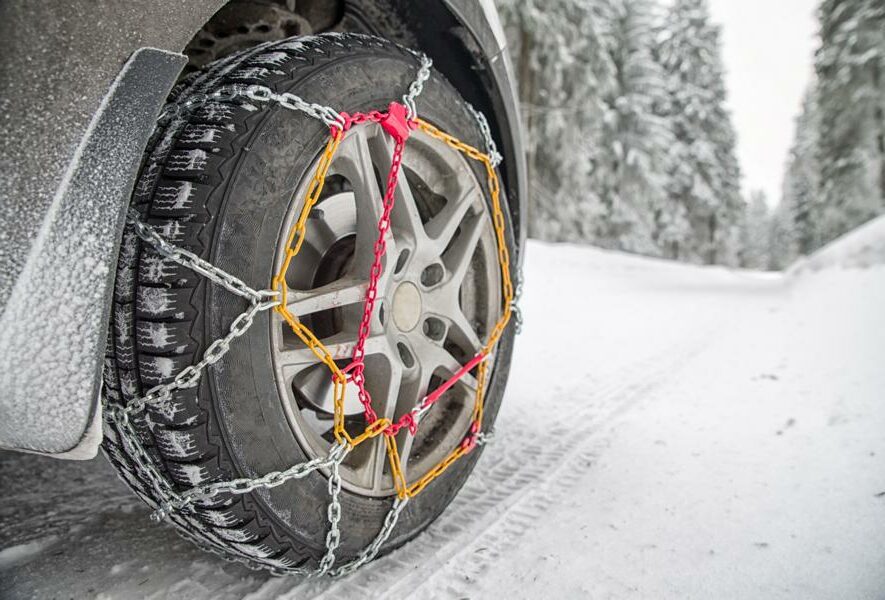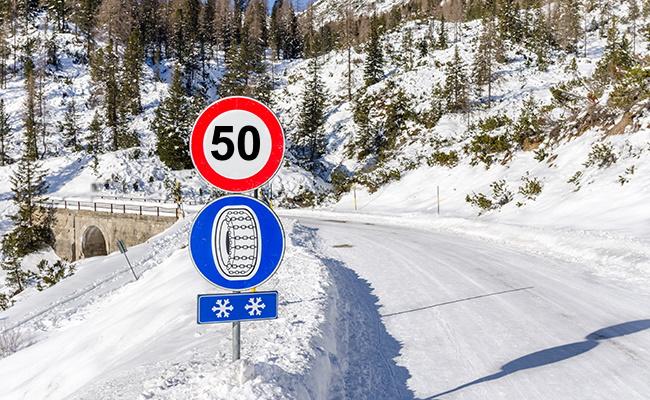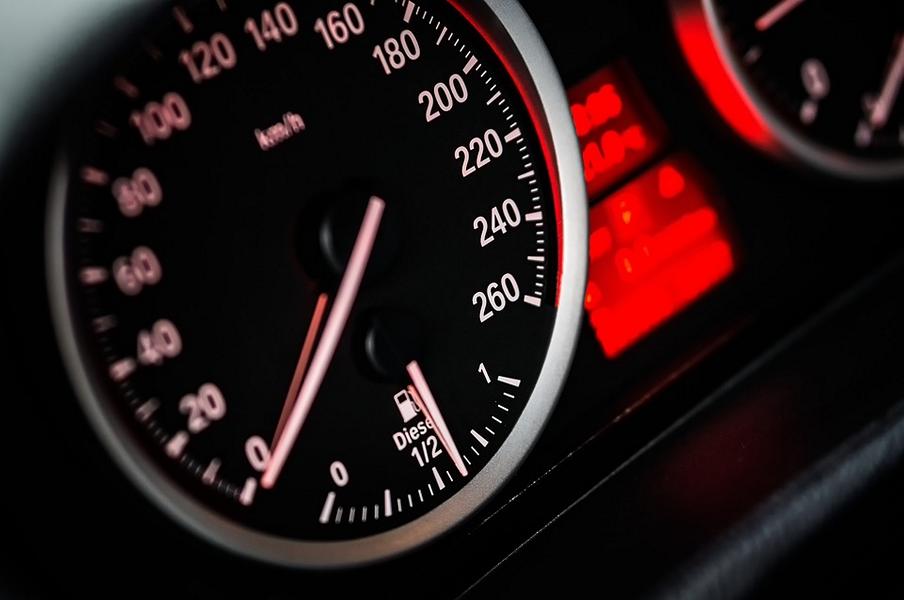Recently updated on September 11, 2023 at 12:57 am

In snow, snow chains are the ideal tool to defy the weather conditions. The most common questions have been compiled and answered here.
Snow chains on the rear, front axle, or both?
If you want to buy snow chains for the first time, you will probably be wondering whether these are attached to the rear axle or the front axle of your car. Or even on both axes. In a front-wheel drive vehicle, the snow chains are mounted on the driving wheels. In this case, the two front tires. The opposite is true for a rear-wheel drive vehicle. Here, too, the snow chains are mounted on the driving tires, i.e. on the two rear tires.
How many snow chains with all-wheel drive?
But what about a four-wheel drive vehicle? In vehicles with four-wheel drive, snow chains must be installed on at least two wheels on a drive axle. If no specific specifications are provided in the operating instructions for the vehicle in question, the snow chains should be mounted on the front axle. This makes it easier to steer and brake the vehicle on a downhill stretch. In order to prevent the rear axle from breaking away, it makes sense to fit snow chains on the rear axles of vehicles with all-wheel drive.
When is snow chain compulsory in Germany?
Regulation sign 268 indicates whether snow chains are compulsory on a road. Recognizable by a round, blue sign with a white car tire in the middle which means that this road can only be used with snow chains. Note the maximum speed. The StVO stipulates that you must not drive faster than 50 km / h with snow chains. In addition, snow chains must at least be mounted on the wheels of the drive axle. Anyone who disregards the obligation to use snow chains and simply continues to drive without snow chains must expect high fines and may lose insurance cover in the event of damage.

Which snow chains for aluminum rims?
If snow chains are not put on correctly, tires and rims can be damaged. Of course, this is especially true for the often very expensive aluminum rims. In winter, aluminum rims should not be attached, because unfavorable weather conditions in connection with road salt can quickly cause scratches or cracks on the expensive rims. If you still want to mount snow chains on your alloy rims, it is best to seek advice from a specialist dealer. Normal snow chains can scratch or damage aluminum rims. Therefore, only chains with special protection should be used here. For example a protection made of textile fabric, which is stretched over the rims together with the chain. This means that the chain links do not come into direct contact with the aluminum rims.
How fast can you drive with snow chains?
Anyone who has never driven with snow chains needs a little practice, as the driving characteristics of the vehicle change. For example, steering becomes more difficult. If you have fitted snow chains, you must not drive faster than 50 km / h. This is because a higher speed can seriously impair driving stability, so that it is easy to lose control of the vehicle. The rule of 60 km / h also applies on motorways, which normally have a minimum speed of 50 km / h.

Where can I buy snow chains?
Snow chains can be purchased at any well-stocked car accessories store. Of course also at car dealers, automobile clubs or online. However, a test installation is just as important as choosing the right type of snow chain for your car. If you have never driven with snow chains before, be sure to put the chains on beforehand so that you know exactly what to do in an emergency.
Is it mandatory to have snow chains abroad?
Many holidaymakers go on winter vacation by car. In most of the neighboring countries, snow chains are mandatory for certain areas or roads and passes. The maximum speed with snow chains is 50 km / h in most EU countries, but it can also be less or more. You should definitely inquire about this before starting a trip. You can get information from an automobile club, online or when booking at a travel agency.
Do snow chains need special care?
So that you can use your snow chains for a long time, they should be cleaned thoroughly after every journey, but no later than the end of the winter season. Well-dried, they can then be stored in their packaging in the garage or basement until the next winter.
Do you still need snow chains when you have winter tires?
Winter tires ensure good grip on ice and snow. But sometimes there is no further advancement without snow chains. Especially in winter sports areas or on snow-covered passes. Then snow chains are useful and sometimes even mandatory.

in summary - clear the car properly from snow:
- Remove snow and prepare the ground
– Dig up the car with a shovel or similar tool
– all wheels should be visible
– In addition to snow, also watch out for ice
– heavy or deep snow requires a lot of strength
– Be sure to dig out the tires far enough so that you can get in
– Do not necessarily remove ice with a rough surface, it may offer grip
– Look at the exhaust before starting the engine (it must be free of snow, otherwise exhaust gases can get inside)
- Spread something granular around the tires (behind and next to the tires, powder - grit - wood chips - salt - cat litter - car mats - door mats - carpet scraps, this gives the tires more grip)
- try to drive out - Place solid objects such as boards, checker plates, etc. in front of and behind the tires
– this gives grip if the litter didn't work
– Driving the car out of the snow
- Switch to four-wheel drive, if available
– Put on snow chains, if available
– shift to the lowest gear (automatic vehicle level 1)
– Straighten the wheels
– Turn the steering wheel so that the front wheels are as straight as possible
– rock the car out of the snow (a bit backwards, forwards again, etc.)
– Proceed carefully and not too much speed
- if there are no visible successes after a few minutes, give up to keep your gear intact - let some air out of the tires
– deflate until the tire can be easily depressed (no longer than 20 to 30 seconds)
– but only if the tires are not already low on air
– do not let out too much air if you have no way of increasing the tire pressure again afterwards
– Do not let the wheels spin
– the wheels spin but nothing moves, let it go
– Inflate air again - lift the car
– Clear a sufficiently large area for the jack
– If possible, use a particularly stuck bike
– Remove loose snow and ice as best as possible
– Clear a flat and firm place for the jack
– Only raise the car with the jack at a stable point on the frame
– Lay down a solid base for the jack
– lift the car from the vehicle / jack according to the operating instructions
– fill up the area under the tire with solid objects to give it grip (sand, gravel, rocks, blankets, plants, wood shavings)
– compress the whole thing (if possible with a rubber mallet or stone)
- Lower the car
- try to drive out
We have published countless more tuning reports on tuningblog.eu. If you wanted to see an excerpt then just click HERE, And also interesting products around the topic Cars and Car tuning are online. We have included an extract from the last ones for you:
"Tuningblog.eu" - we keep you up to date on the subject of car tuning and car styling with our tuning magazine and we present you the latest tuned vehicles from all over the world every day. It's best to subscribe to ours Feed and will automatically be informed as soon as there is something new about this post, and of course also to all other contributions.
 tuningblog.eu Your magazine about tuning the car
tuningblog.eu Your magazine about tuning the car


